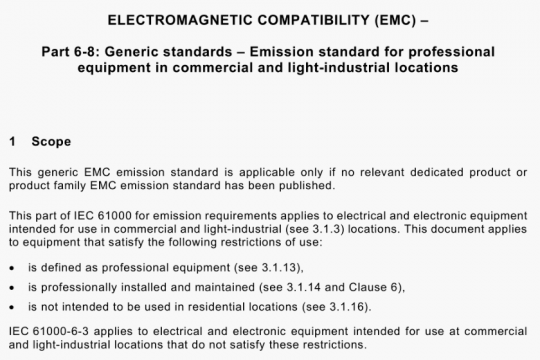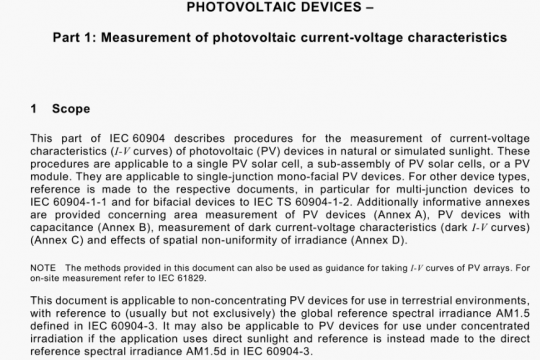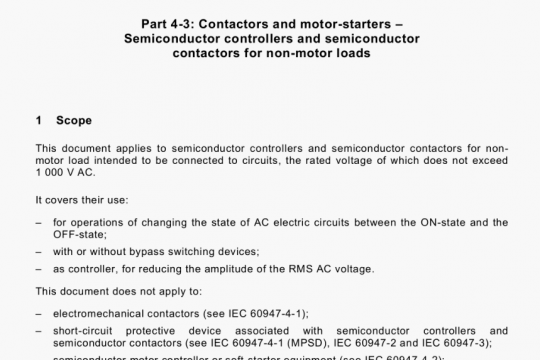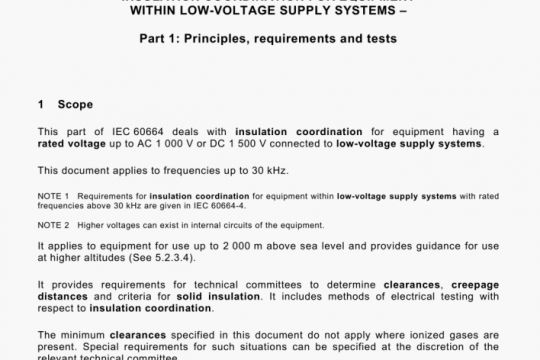IEC 60034-2-3-2020 pdf free
IEC 60034-2-3-2020 pdf free.Rotating electrical machines – Part 2-3: Specific test methods for determining losses and efficiency of converter-fed AC motors.
The following documents are referred to in the text in such a way that some or all of their content constitutes requirements of this document. For dated references, only the edition cited applies. For undated references, the latest edition of the referenced document (including any amendments) applies.
IEC 60034-1 :20 17, Rotating electrical machines — Part 1: Rating and performance
IEC 60034-2-1:2014, Rotating electrical machines — Part 2-1: Standard methods for determining losses and efficiency from tests (excluding machines for traction vehicles)
IEC 61000-2-4:2002, Electromagnetic compatibility (EMC) — Part 2-4: Environment — Compatibility levels in industrial plants for low-frequency conducted disturbances
IEC 61800-9-2:2017, Adjustable speed electrical powei drive systems — Part 9-2: Ecodesign for power drive systems, motor starters, power electronics and their driven applications — Energy efficiency indicators for power drive systems and motor starters
3 Terms and definitions
For the purposes of this document, the terms and definitions given in IEC 60034-1:201 7, IEC 60034-2-1:2014 as well as the following apply.
ISO and IEC maintain terminological databases for use in standardization at the following addresses:
• IEC Electropedia: available at http:ilwww.electropedia.orgl
• ISO Online browsing platform: available at http://www.iso.org/obp
3.1 motor losses with converter supply when powered by a converter, motor losses are a combination of losses caused by fundamental frequency and losses caused by the converter high frequencies
3.2 fundamental losses fundamental losses in the motor can be segregated into five different components: iron losses (varying with motor frequency and applied fundamental voltage), friction and windage losses (varying with motor speed), rotor winding losses, stator winding losses and additional load losses (all three varying with motor current). Fundamental losses are the losses of a motor running with application of rated voltage at fundamental frequency that does not contain any further high frequencies.
3.3 additional high frequency losses additional high frequency losses are produced in the motor by the non-sinusoidal voltage and current waveforms generated by the converter and are in addition to the losses of iron, friction and windage, rotor winding, stator winding and additional load loss (fundamental losses)
3.4 base speed range speed range from standstill up to the highest speed where the motor can be supplied with a voltage that changes in proportion to the speed so that the magnetic flux remains constant (constant ratio fill) for induction machines and according to the MTPA (maximum torque per ampere) for synchronous machines. Within the base speed range, the maximum motor torque is constant (constant torque range), if constant flux control is used.
3.5 switching frequency number of switching events of one semiconductor within one second. It determines, together with the selected pulse pattern and the converter topology, the lowest frequency of noncontrollable high frequencies or inter-harmonics at the IPC (in-plant point of coupling) or the motor.IEC 60034-2-3 pdf download.




